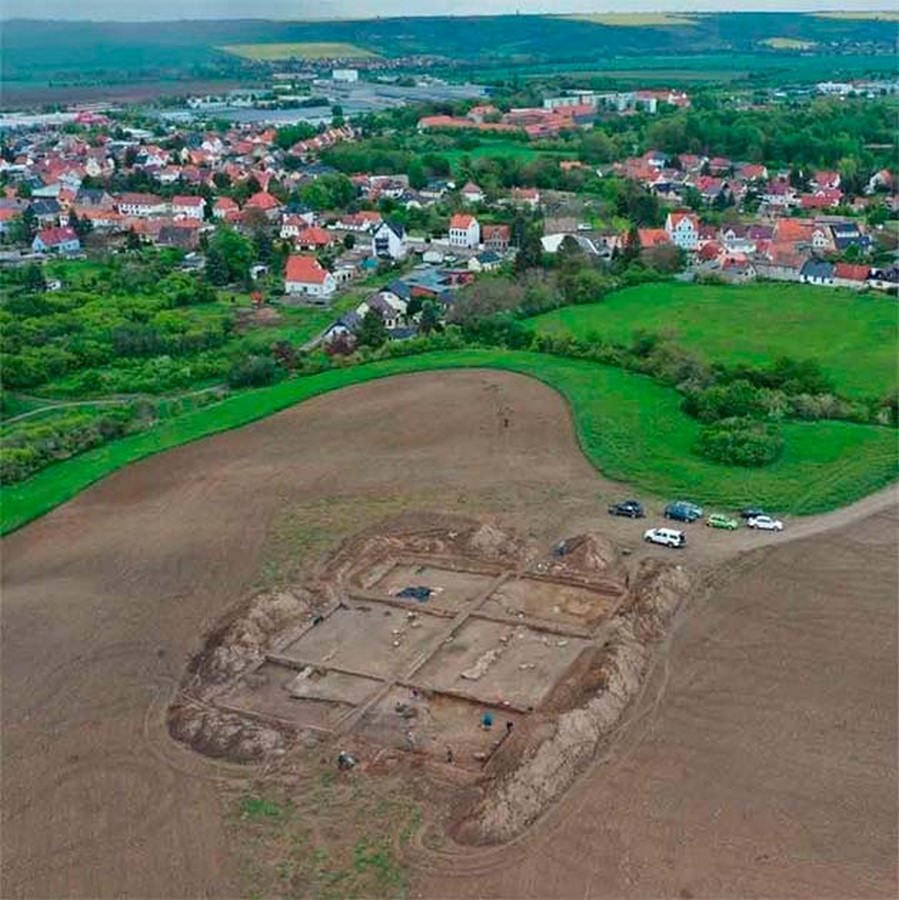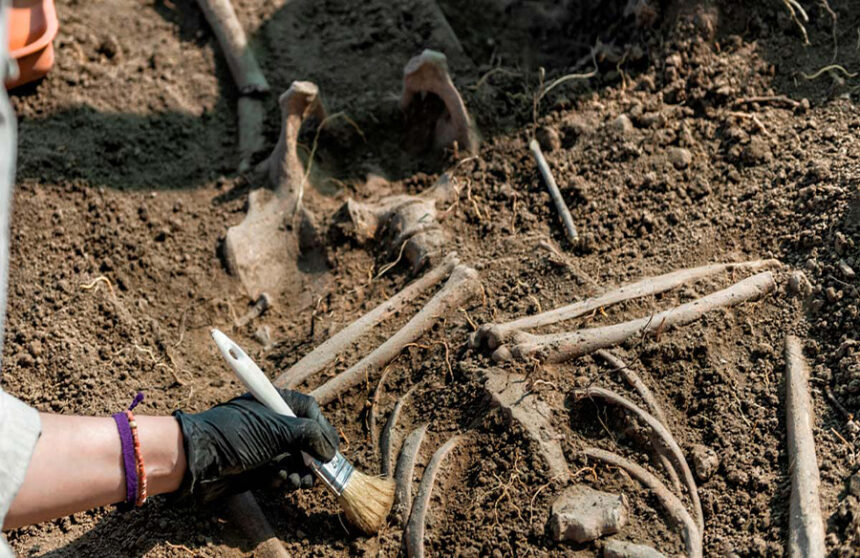Amidst the ancient imperial palace site in the village of Eisleben, Germany, archaeologists made a startling find: the 1,000-year-old remains of an elite couple. Unearthed within the castle fortifications, the graves shed light on the aristocratic power structure of ancient Helfta, revealing intriguing details about the lives of the deceased.
Elite Burials Unveiled
The excavation revealed two graves dating back to the Carolingian period, housing the bodies of a man and a woman presumed to be a married couple from the 9th century. Notably, the woman’s skeleton was found devoid of facial bones, a peculiar feature that puzzled archaeologists. While speculation suggests a possible fatal accident, the exact cause remains a subject of investigation.

Insights into Social Hierarchy
The man’s burial was accompanied by a lavish assortment of iron grave goods, including a knife, a belt set, and part of a staff of office—a symbol of high status. This suggests that he held a prominent position within the social hierarchy of ancient Helfta. The proximity of their graves to the medieval castle further indicates their wealth and aristocratic status.
Fortified Imperial Palace Unearthed
The excavation also unearthed the ruins of the fortified imperial palace, along with pit houses and additional structures dating back over 1,000 years. These extensive ruins provide valuable insights into the infrastructure and daily life of the Carolingian-Ottonian center of power. The presence of dense settlement areas suggests a sizable population resided near the palace during this period.
Otto the Great’s Legacy
The medieval palace site is closely associated with Otto the Great, a renowned Holy Roman Emperor who resided in Helfta palace during his reign. Otto’s patronage is evident in the discovery of a grand Catholic church foundation, constructed at his behest. This monumental structure serves as a testament to his dedication to the Catholic faith and his influence in the region.
Continuing Discoveries
Excavations at the Helfta royal palace site will continue, with archaeologists hoping to uncover further artifacts and structures that shed light on the region’s rich history. Ongoing analysis of the newly discovered skeletons in laboratory settings aims to unravel the mysteries surrounding their deaths and the enigmatic absence of the woman’s facial bones.
As researchers delve deeper into the past, the ancient site of Helfta promises to reveal more about the legendary culture that once thrived in eastern Germany, offering valuable insights into the early medieval period and beyond.



Leave a Reply